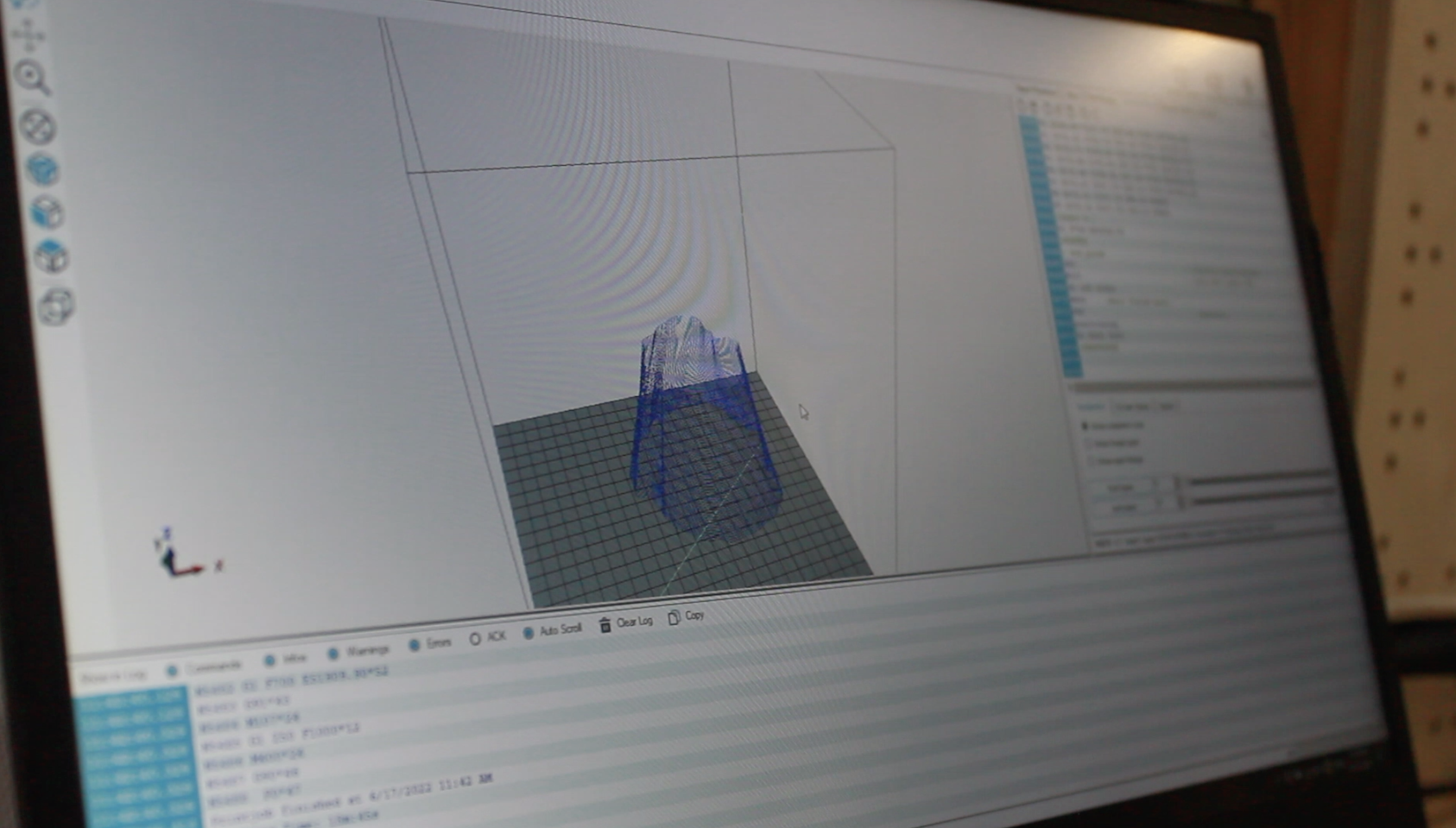3D Printing Clay with a Modified Ender 3
For Joaquins project 'Sonic Ecologies' I helped with some of the steps necessary to 3D print with clay. The goal was to collect clay from Valldaura, as well as environmental audio recordings, to use both to transform them into physical 3D artifacts. By slowing down the recordings, folding the sound waves into a circle and then lofting two of them into a 3D volume allowed Joaquin to achieve an interesting 3D object that embodied the story of the material and its surroundings.
Printing the object with the original clay proved to be a challenge however. Due to the high degree of small particles, such as sand, which persisted in the material even after sieving, the substance was more brittle and fragile when compared to industrially processed pottery clay. Consequentially, most of the 3D volumes were printed with this material to guarantee a smooth printing process. Below some impressions of the process and the final outcome can be found.

Original clay collected from Valldaura. Notice the high percentage of small particles, such as sand, which made it challenging to find the right water to substance mix ration.

Lofting two slowed-down sound waves to generate the 3D volume.

Monitoring the pressure provided by a compressor going into the clay cartridge. This is necessary to feed a continuous stream of substance into the modified extruder of the Ender 3, where a spindle controls the final outflow of material.

Here, the quality of the print can be seen close-up. This object was not printed with the Valldaura clay but with the standard industrial red clay typically used in pottery.

An object close to completion, while printing. Notice the increased print line width to achieve a more stable result.
Further Links
Wildcard Week
assignment
Design and produce something with a digital fabrication process
(incorporating computer-aided design and manufacturing) not covered
in another assignment, documenting the requirements that your
assignment meets, and including everything necessary to reproduce
it. Possibilities include (but are not limited to):
machines
electrical discharge machining
5-axis machining
waterjet cutting
flatbed cutting
plasma cutting
laser metal cutting
laser micromachining
welding
molding and casting
vacuum forming
rotocasting
folding
mathematics
form and function
robotics
arms
construction
soft
actuation
pneumatic
inflatable
electronics
pick and place
programmable logic
embedded programming
machine learning
machine vision
food
printing
gastronomy
materials
synthesis
mechanical
rheological
biotechnology
DIYbio
iGEM
HTGAA
Bio Academy
textiles
fiber processes
knitting
embroidery
PEmbroider
Ink/Stitch
Fabricademy
composites